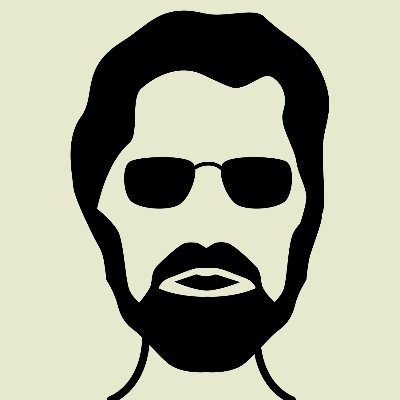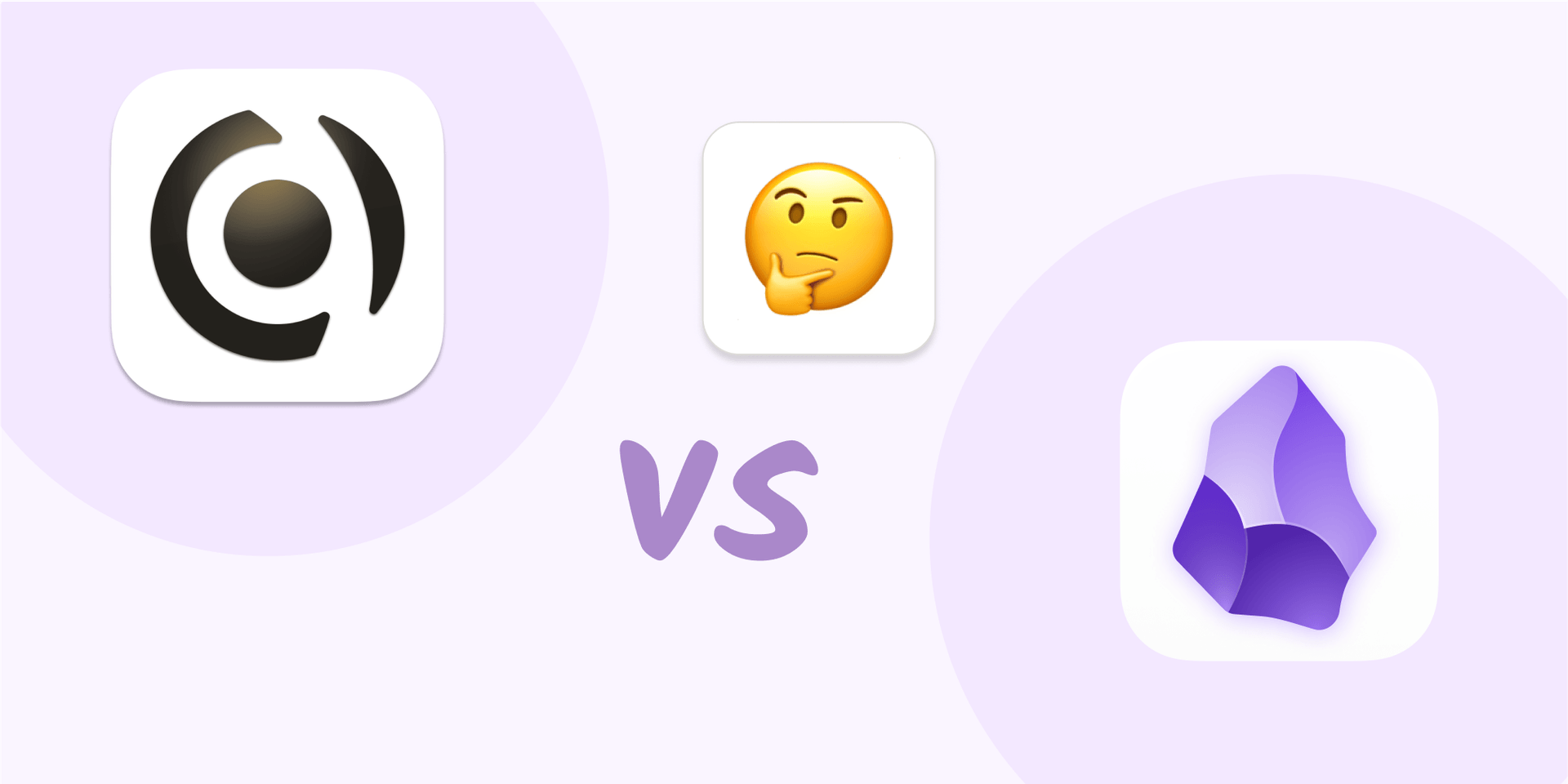
Capacities vs. Obsidian

Capacities and Obsidian are two networked note-taking apps. They allow us to make associative links to related content in order to build out an understanding of the information we’re working with. This is a great way to work with knowledge as it represents how our brains think.
This article aims to give you some insights and a rough understanding of how Capacities works compared to Obsidian. It should provide the information future note takers will need to decide if Capacities may be the better choice for them.
To be clear if you already have a well-established and great workflow in Obsidian and are happy with it, stay where you are. 🙂 We know how important it is to reach consistency with your note-taking tool.
But if you haven’t made the decision yet, or if you have the feeling that something is missing then read on. With both apps, Obsidian and Capacities, you can create links from one note to another, see them in the backlinks section of the other note, write in a daily note, use tags and see your notes visually in a (local) graph view. But there’s a lot more to discover…
We will talk about
- decision fatigue
- how we handle (back)links and tags
- object-based note-taking
- daily notes
- export to markdown
- date protection
Let’s get started!
Capacities is Right for You if…
- You are overwhelmed
- You love networked note-taking but want better backlinks
- Object-based note-taking makes sense to you
- Your data should be yours and it should be portable
- You want to do more with your tags
- You are a visual person and want to reuse your content in many ways
- Time and dates are important components for your note-taking
Read more about each point below!
You are overwhelmed
Do you ever feel overwhelmed by too many choices? Do you ever struggle just to get started?
This overload can lead to decision fatigue and wasted energy. Obsidian offers numerous customization options. While this is seen as a positive feature, it can also overwhelm users. They can find themselves inundated with options like core plugins, community plugins, CSS snippets, themes, dashboards, and more. Instead of focusing on getting work done, they end up constantly tweaking settings, leading to procrastination.
This is where a craving for limitations and structure often comes in. We’ve heard from many digital note-takers that Capacities strikes the perfect balance between personalization and structure. There are still some choices to make, but there’s no need to set up your workspace with plugins; many features are ready to use right out of the box. It’s simple, intuitive, and it just works.
You love networked note-taking but want better backlinks
The backlinks section in Obsidian does what it should do but that’s that. No images to see, no rendering of wikilinks, just plain markdown. Capacities approaches this differently, truly honoring the effort you made connecting the dots and linking one note to another.
When you go to the backlinks section at the bottom of any object, you can see related notes in many beautiful and usable ways including the formatting and images from the original note! Similar to other parts of the app, you can customize how the information is presented.
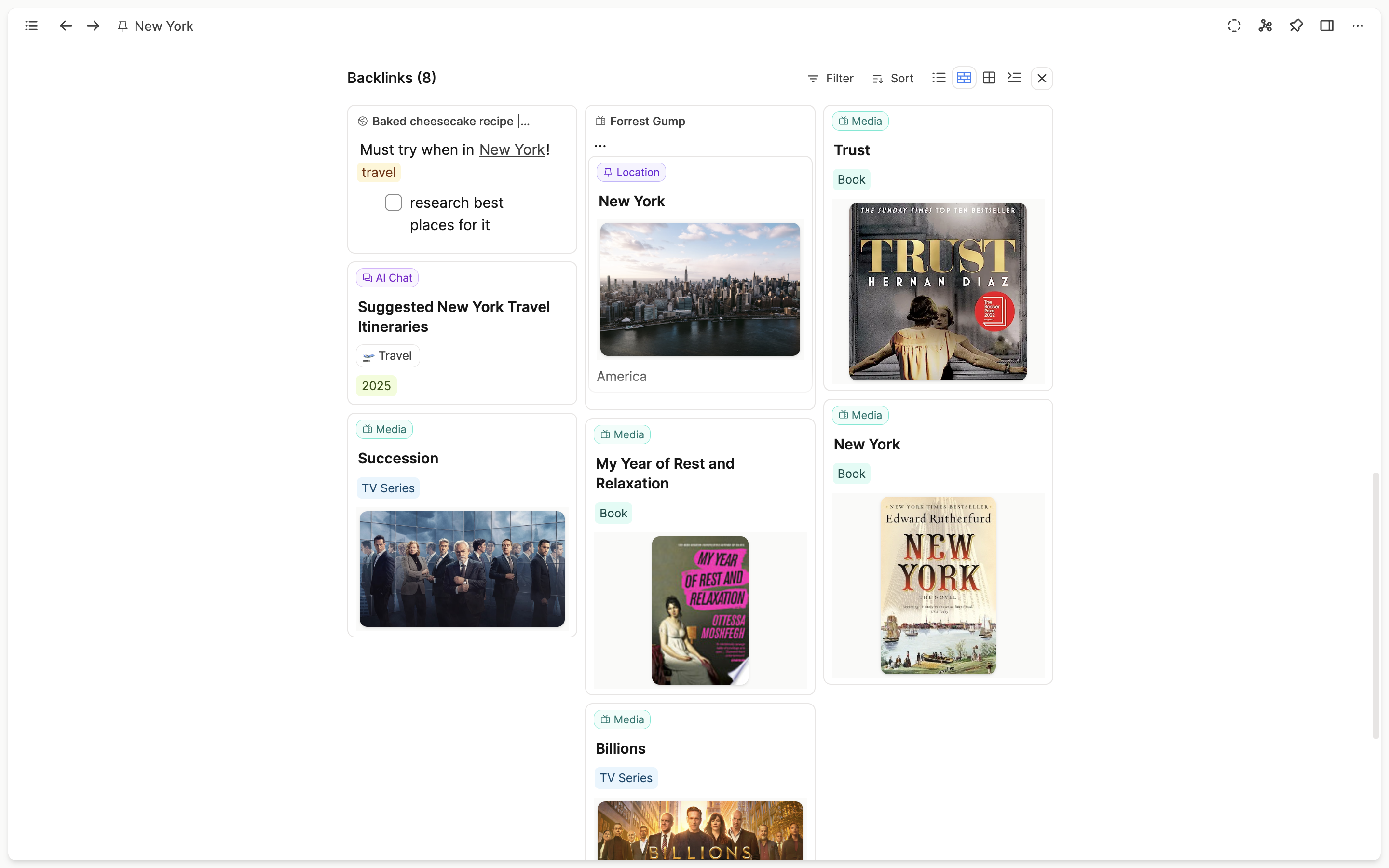
As your space expands, you might find it useful to filter and sort the results for easier review, which is also possible in Capacities. This gives backlinks, as the most important part of networked note-taking, the love they deserve and this gives you more control in using them, which truly adds to your knowledge work.
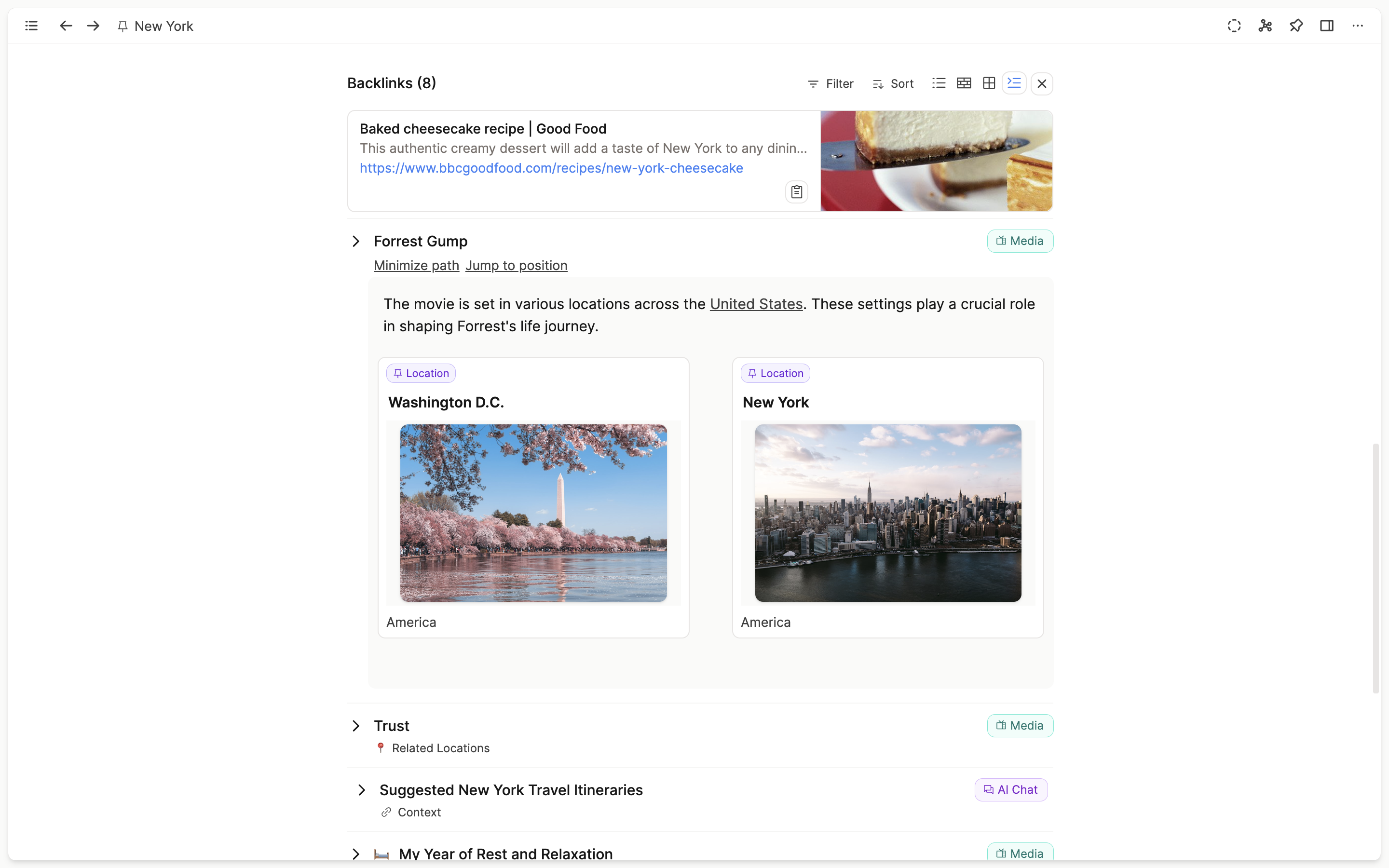
Object-based note-taking makes sense to you
We create hundreds or thousands of notes and they are just faceless pages with little meaning by themselves. But if we try to observe our thinking we will realize that our brains don’t work like that. Our world is made up of real objects, not abstract pages. We think about people, have questions, read books, or attend meetings. So why don’t we apply this way of thinking to our note-taking?
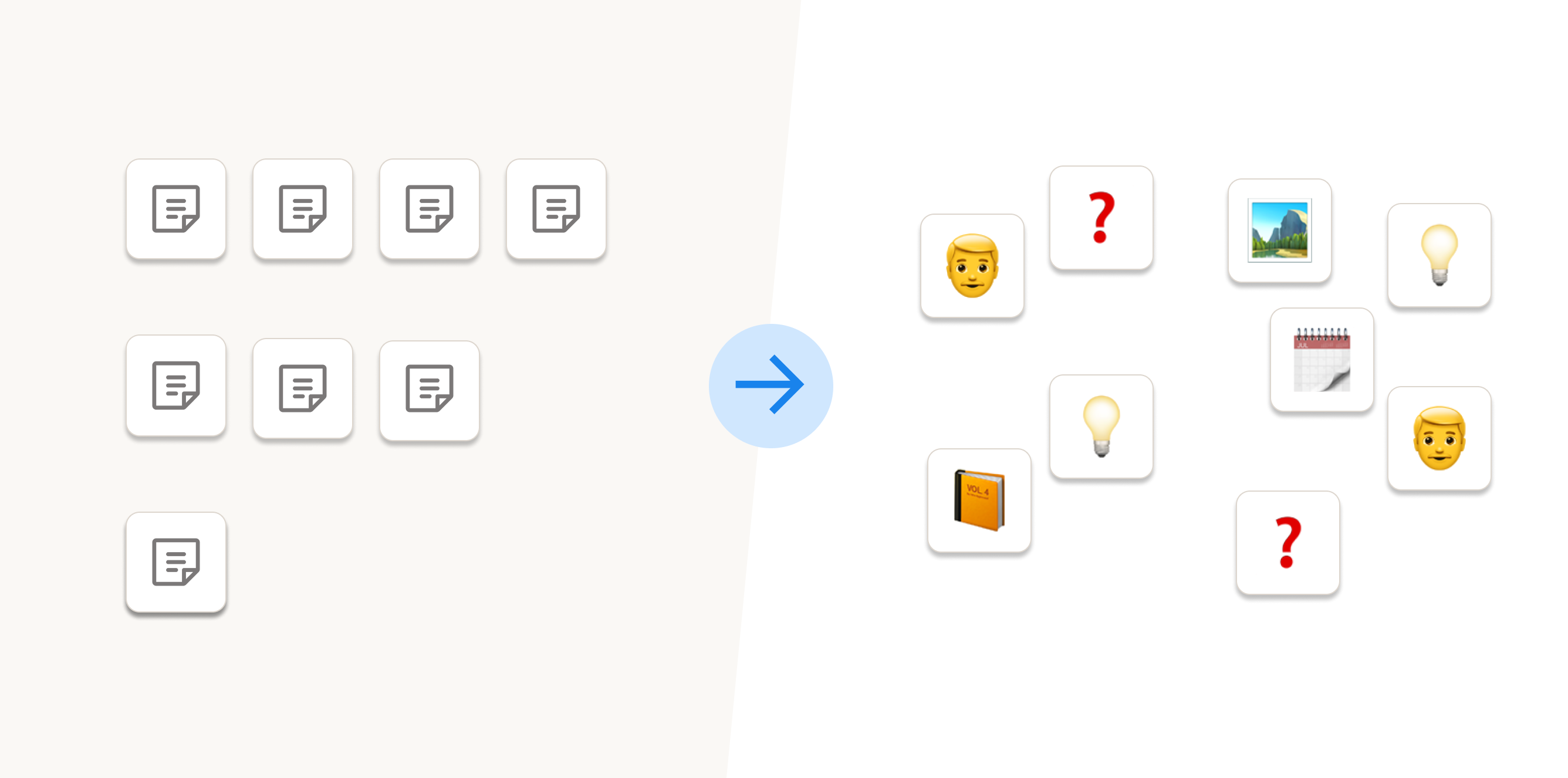
You can write notes in different contexts, inside your daily notes, as part of another note, on it’s own - wherever works for you. But each note has a type. You can just use regular pages or other object types (like books, meetings etc.).
This means if you want to see all notes of a dedicated type then you can do just that. Simply go to the relevant object type in the left sidebar and see all notes (=objects) of that type.
Some people try to mimic this process in Obsidian manually, and, it is possible. But Capacities offers you this functionality out of the box.
Capacities also supports many default object types, such as images or PDFs. For example, if you paste a picture in any page, it’ll automatically be recognised as an image object, same for if you use a tag, or if you upload a PDF. You can then find all your images, or all your PDFs by clicking on the relevant type in the left-hand sidebar. Perhaps the most important default type is Page. This has everything you need to take notes per default, all you need to do is start typing.
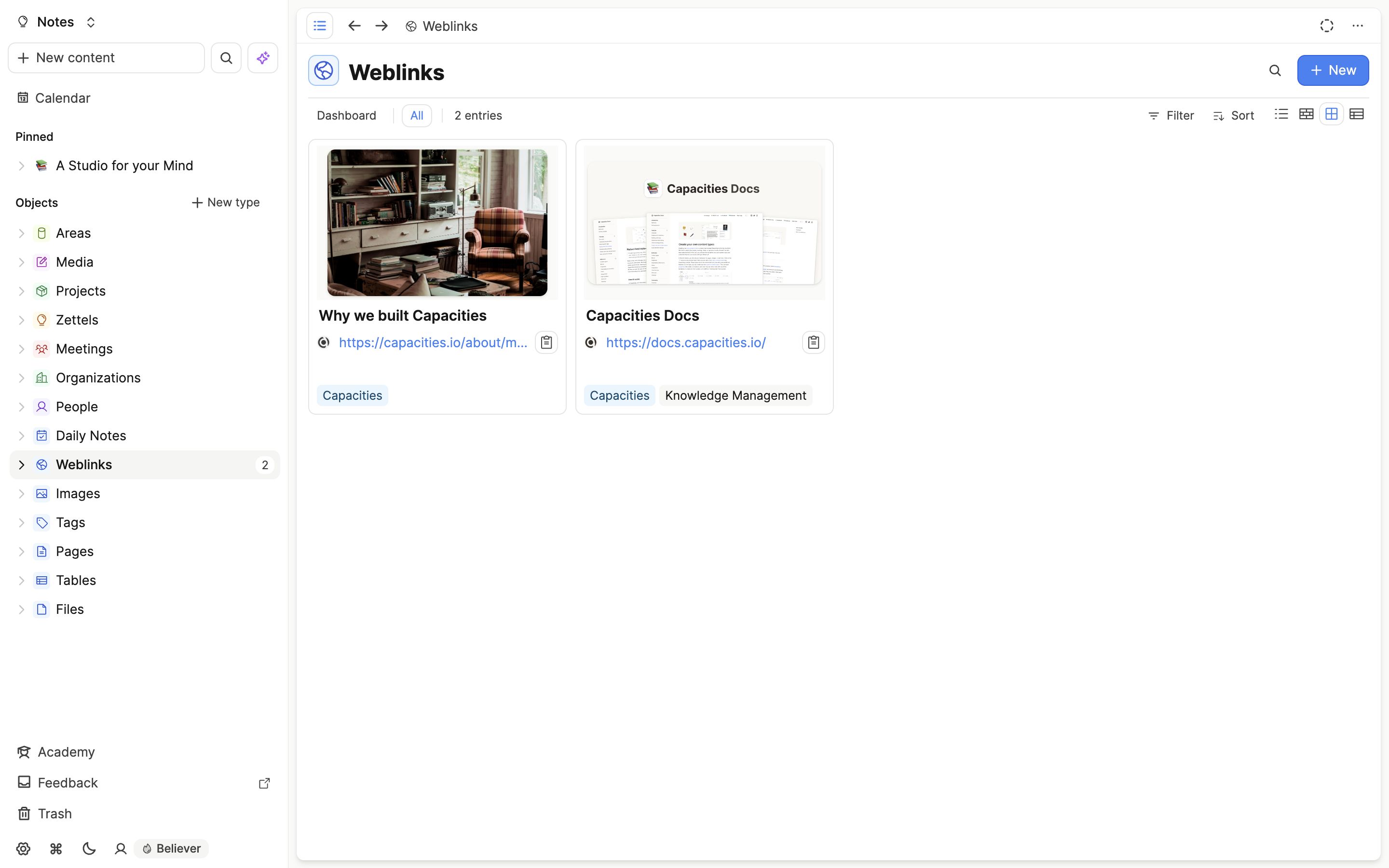
Then, when your notes start to grow, you look for ways of organising them. Over time, you may use the templates available or create custom object types. They are just how they sound: you define what settings they have so that every object of that type looks just how you want it, every single time. Currently you can customise properties, page layouts, colours, icons, how the your embedded links look and more. If you add a date property to your object type, you’d even get a handy button on your daily note for you to quickly add objects.
This is one way we show customization with constraints comes in - you can make your knowledge studio work for you by defining custom objects with custom settings, but we don’t let you customize everything. Put differently, you can set up what you need for your work, then get on with your work!
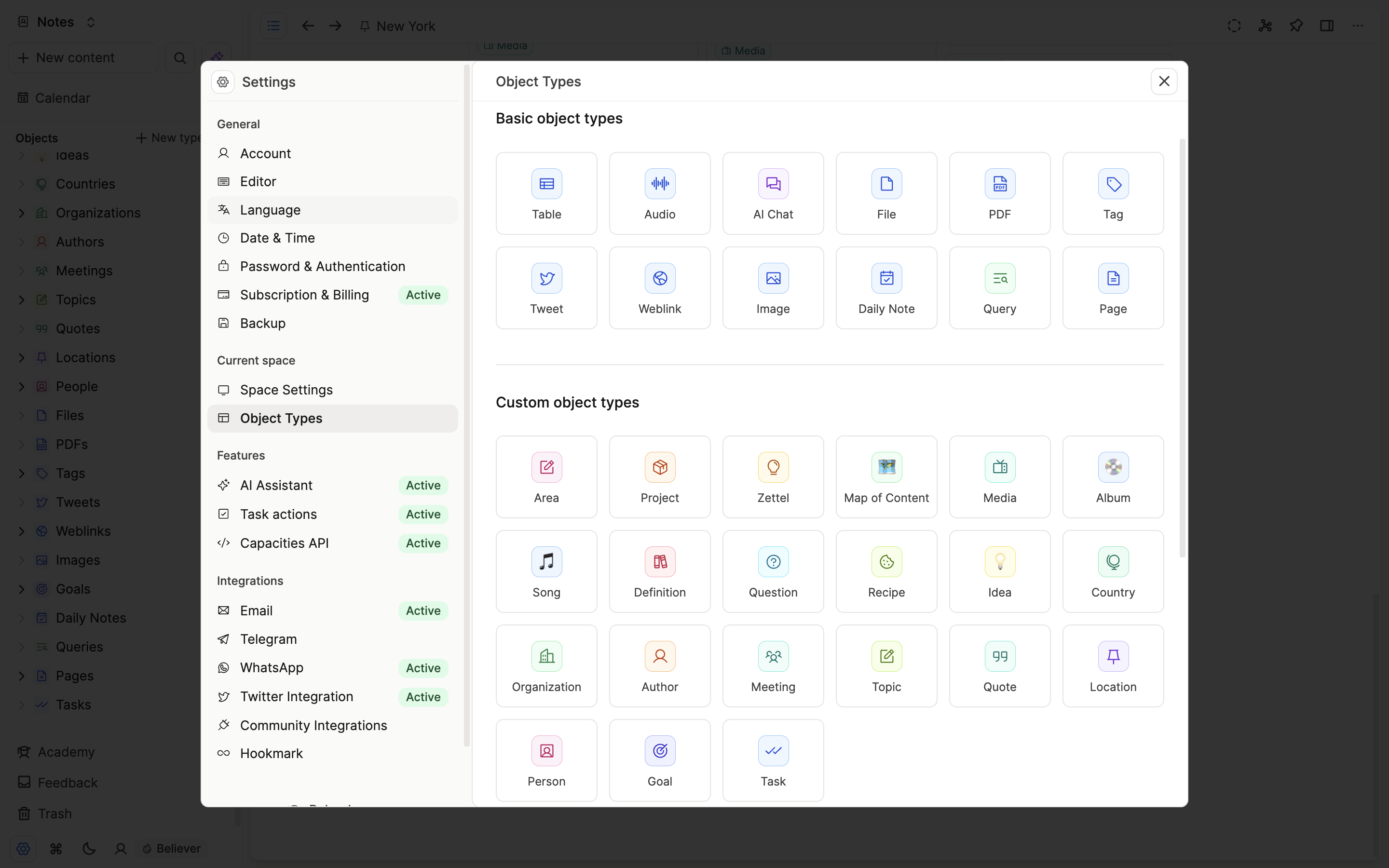
Your data should be yours and it should be portable
A significant consideration for many note-takers is the portability of their notes. In recent years, Markdown has become the standard due to its compatibility and readability across various platforms and apps. With Obsidian storing your notes locally on your device in Markdown, users often find their notes easily readable and transferable across different apps and Markdown editors. However, using community plugins can affect the portability of your Obsidian notes, as these plugins can introduce new features that are not easily transferable. When you open those notes without plugins, you are oftentimes confronted with a lot of useless code in your notes.
Portability is a factor we deeply care about, given that we are not just developers, but note-takers ourselves and we understand the frustration of tool lock-in and the importance of flexibility. So, despite your data not being stored locally as Markdown files on your machine, you can create a export of your notes in Markdown whenever you wish.
When you are using a lot of Plugins in Obsidian the actual file may not look as you expect. Will it be readable in other markdown editors? As Capacities does not rely on community plugins and provides extensive built-in functionality, there are no surprises when exporting your space to Markdown, because you can decide exactly how the export looks with just a couple of clicks. You can chose to include media, show links as Wikilinks and include the title as heading. This is how we make it easy to get instantly useable markdown files out of Capacities.
Do bear in mind that some work is always required when transitioning between tools, though, but our approach at least makes it easy to get data out of Capacities in a format you will immediately understand.

You want to do more with your tags
At first glance, tags are similar in both Capacities and Obsidian: they can be used to structure content. But Capacities’ tags are much more than that.
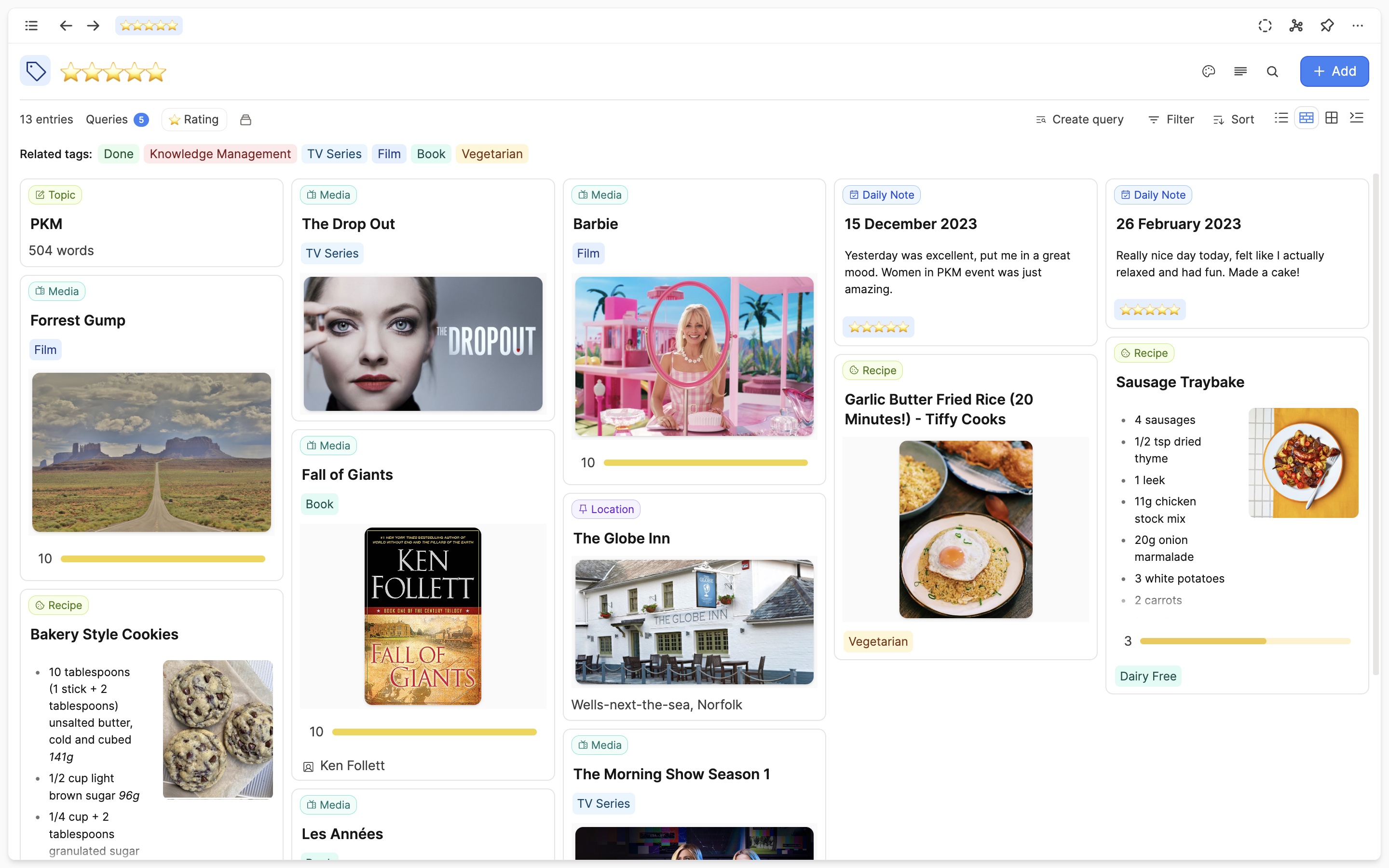
When you click on a tag, you are able to see all tagged content (objects and blocks) in your main screen. You can choose how to browse your tagged items, too. For example you can see tagged items in a list view or a wall view. Note how this isn’t just a wall of text, you can also see tagged images, weblinks and of course your other notes. Because all objects have metadata, you can also filter and sort the results on certain properties.
Visual thinkers might prefer this to the list of items in the left sidebar that Obsidian generates. Moreover, Capacities displays related tags, making it easier for you to quickly navigate through your tag network.
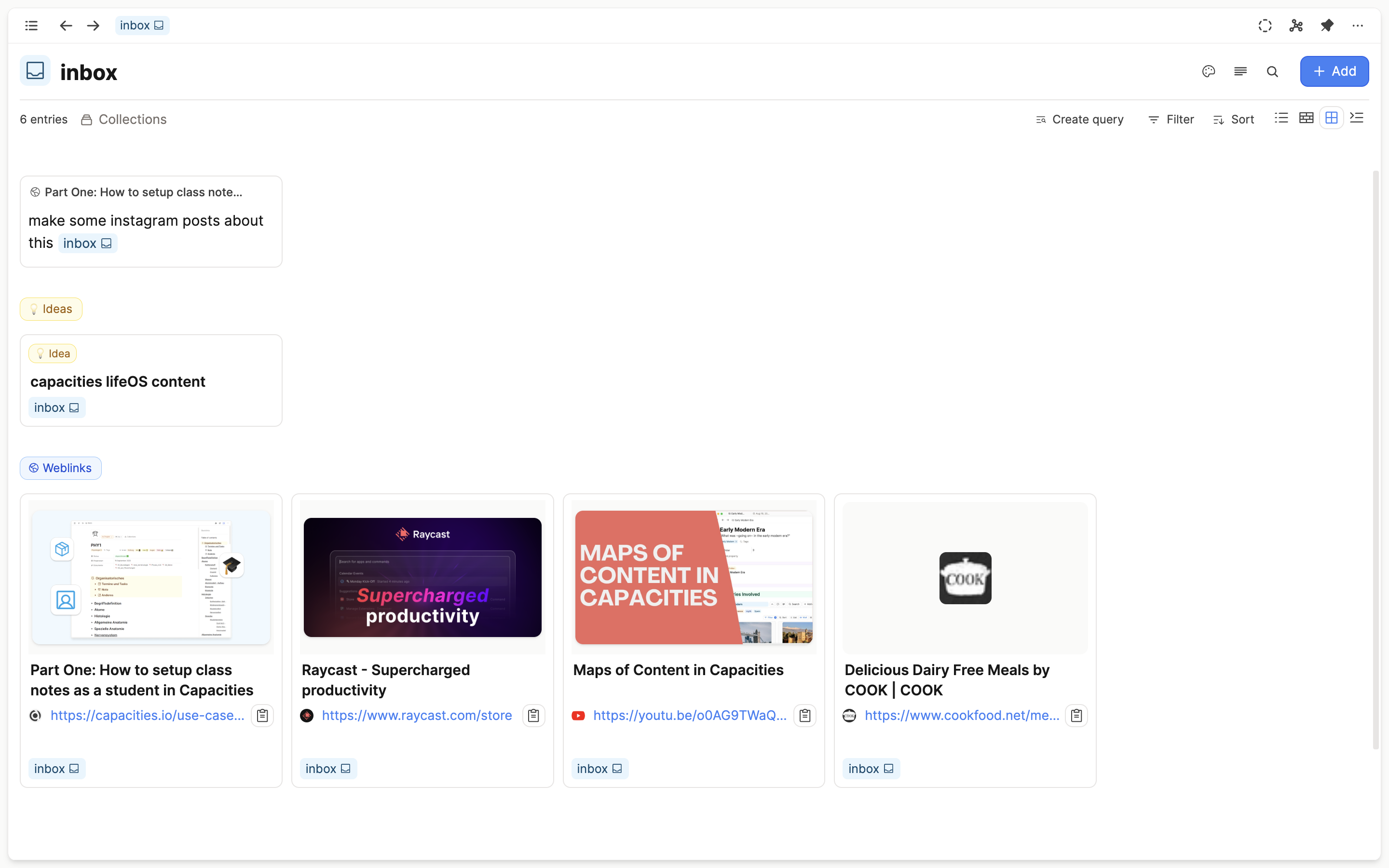
You Are a Visual Person and Want to Reuse Your Content in Many Ways
One of Capacities’ strengths is the ability to view and reuse your notes in many ways. While Obsidian does offer visualization through community plugins like Dataview and Canvas, which provides a more spatial and visual way of structuring knowledge, visualization requires much setup time, tweaking and customization.
Capacities, on the other hand, offers many ways to link to, reuse, and resurface your notes. This includes small or wide cards, linked blocks, and an embedded and editable view for links from one note to another. It also offers list, gallery, and wall views for embedded tags or collections, as well as a table view for object types. This provides a great deal of flexibility in utilizing the knowledge in your space. 🙂

Time and Dates are Important Components for your Note-Taking
Both apps have daily notes. In Obsidian it’s a feature you can choose to have on or off. In Capacities, it’s central because time is one of the three main pillars of Capacities.
We believe it’s important to be able to resurface your notes by date, and to have a central calendar where everything comes together, giving you a chronological view of your thoughts to better understand, review, or browse your content.
One of the ways we do this is a “Created on this day” section in each daily note. No work is needed to set this up, simply choose how you want to review this information.

Equally when it comes to the content of your daily note, just choose how many notes you want to see at a time: 1 day, 3 days, a week or a month at a glance. This works great for reviews.

Other Things To Consider
There are some points we know Obsidian users care about and we want to address them right away.
Capacities is not local first, which means, your data is not primarily stored on your device so you may have concerns about data security, ownership, and data portability.
Instead of being locally stored, your data is stored and secured on our servers, which enables features such as seamless sync between devices and sharing notes via the web. It is also purposefully not end to end encrypted, as that would mean lost functionality that we consider core to Capacities, such as a powerful search and integrations. We understand for some people, our approach makes Capacities an unsuitable choice. Nonetheless, as we are an EU-based, GDPR compliant company, data protection is crucial to us and we strictly protect all your data against any access from third parties. You can read more about this in our data protection memo.
Another point some Obsidian users (and us too!) care about is offline mode. Capacities offline mode let’s you access, create and edit media and content anywhere at any time. That way, it will never let a bad internet connection get in between you and your work. Some features such as integrations and AI still require internet.
Another common concern is that there is no Canvas tool available. For some people, this may be a deal breaker, but rest assured, there are many other ways to visualize and make sense of your knowledge in Capacities!
We hope we could give you a good overview of the key differences between Capacities and Obsidian and could show you where the power and beauty of Capacities lies in. If you want to learn more, there are use cases, community picks and tutorials to read and Youtube videos to watch.
Also feel free to join our Discord community here.
📚 Read more

How to create the knowledge base for your life
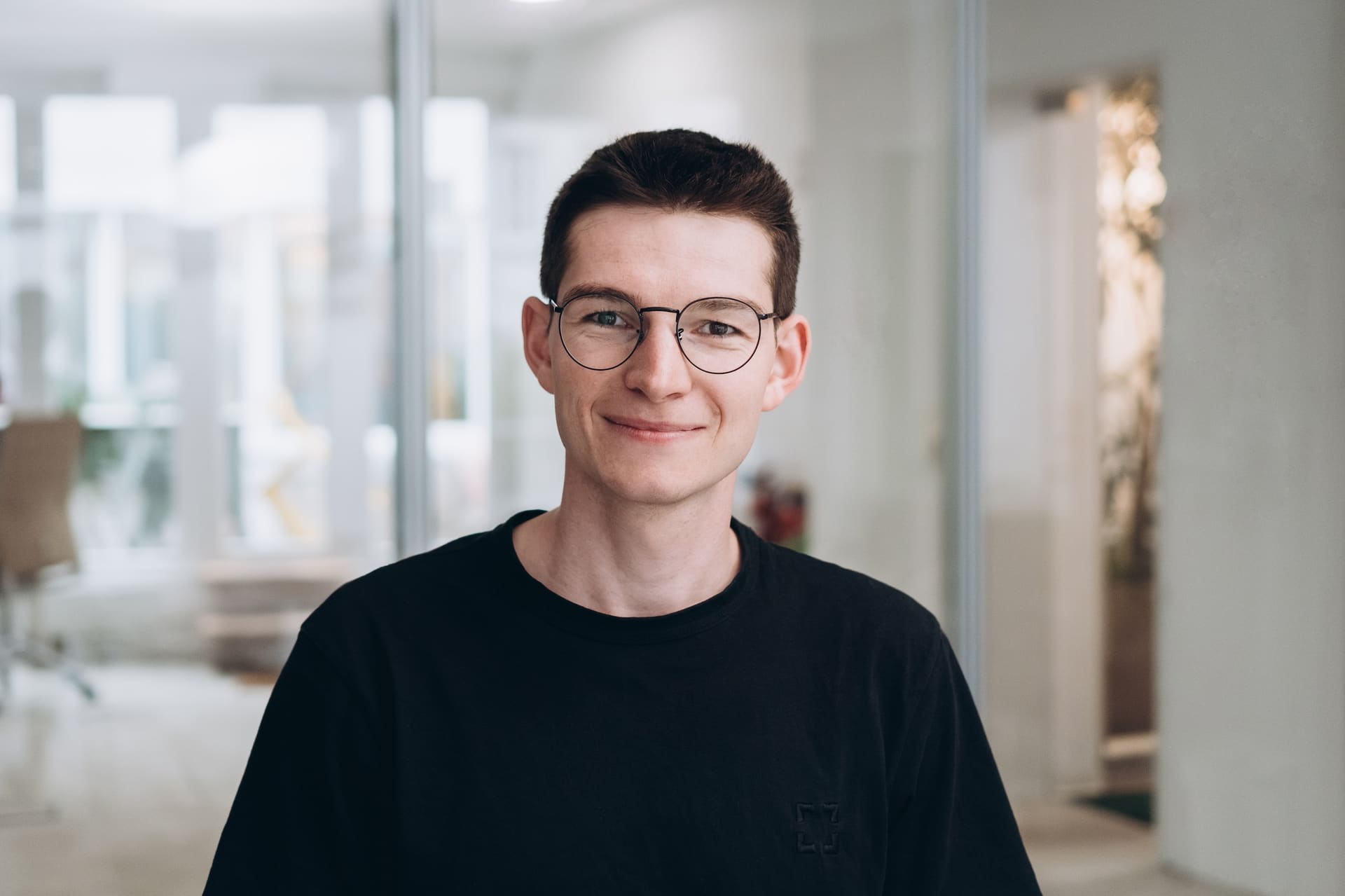
Steffen Bleher
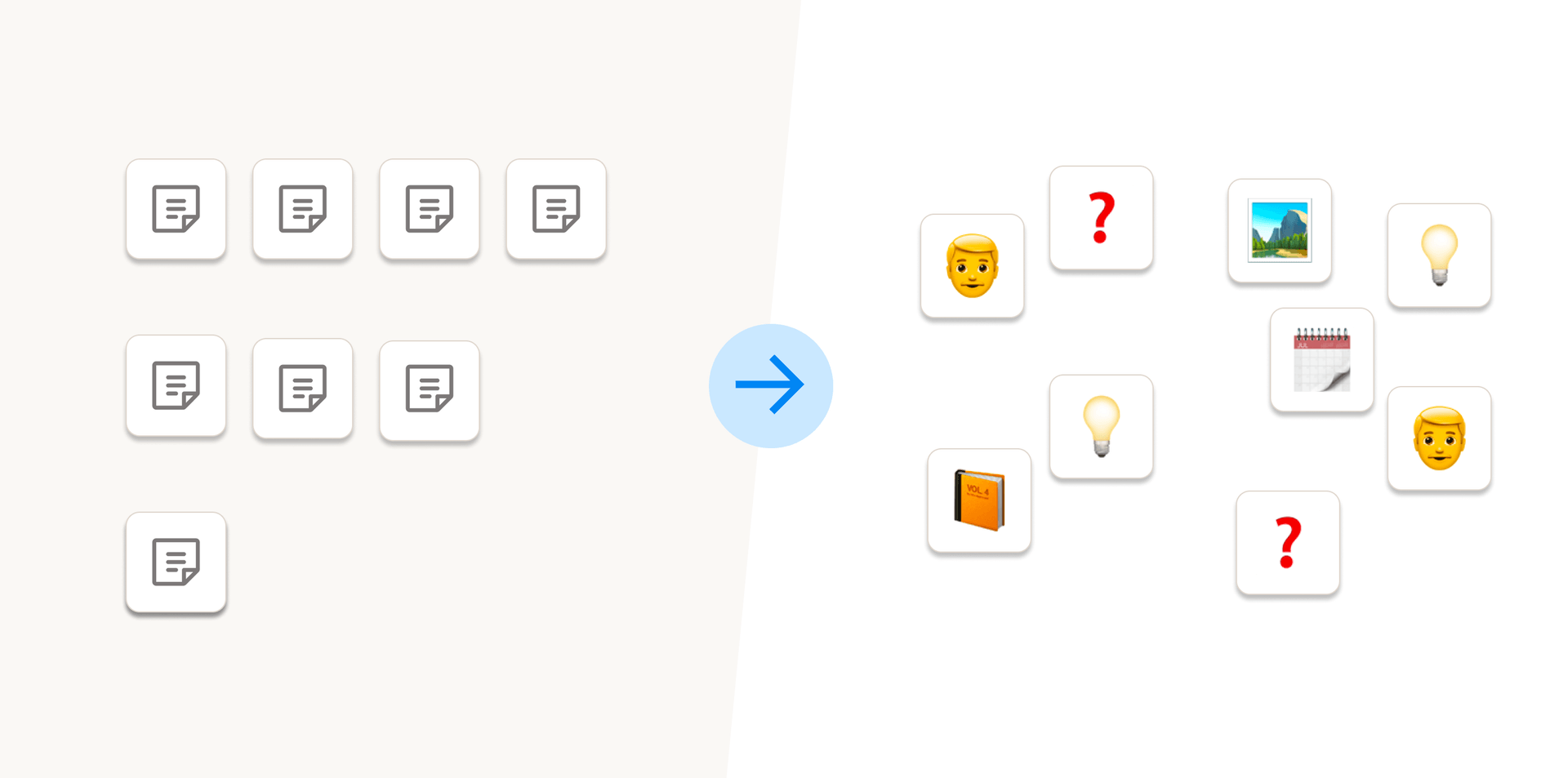
Not all notes are created equal

Steffen Bleher
What our users say

